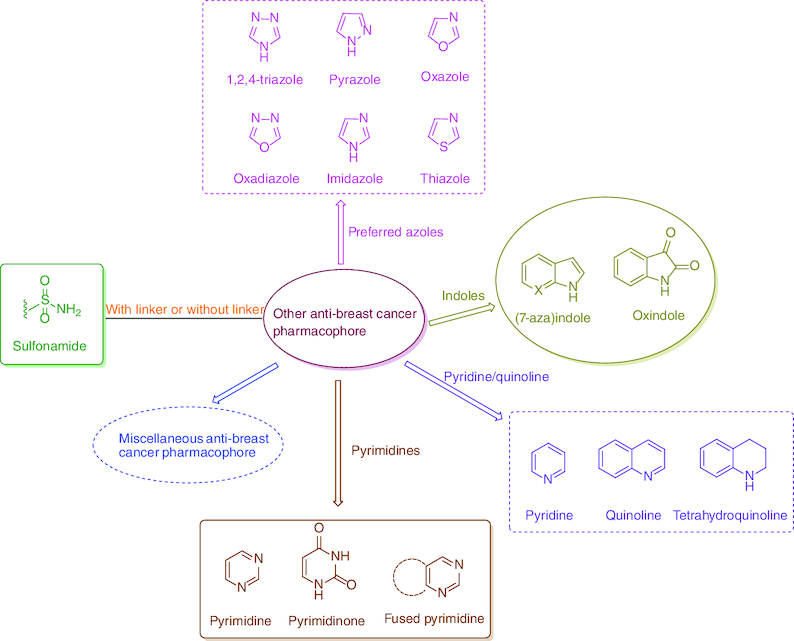Abstract
Cancer as a devastating malignancy, seriously threatens human life and health, but most chemotherapeutics have long been criticized for unsatisfactory therapeutic efficacy due to drug resistance and severe off-target toxicity. Pyrimidines, including fused pyrimidines, are privileged scaffolds for various biological cancer targets and are the most important class of metalloenzyme carbonic anhydrase inhibitors. Pyrimidine–sulfonamide hybrids can act on different targets in cancer cells simultaneously and possess potent activity against various cancers, revealing that hybridization of pyrimidine with sulfonamide is a promising approach to generate novel effective anticancer candidates. This review aims to summarize the recent progress of pyrimidine–sulfonamide hybrids with anticancer potential, covering papers published from 2020 to present, to facilitate further rational design of more effective candidates.
Graphical abstract

The current review outlines the anti-breast cancer potential along with mechanisms of action and structure–activity relationships of sulfonamide hybrids reported since 2020 to shed light on the development of more effective and multitargeted candidates.
Pyrimidine and sulfonamide derivatives could exert the anticancer activity through different mechanisms.
Pyrimidine–sulfonamide hybrids demonstrated potent in vitro and/or in vivo anticancer efficacy.
Rational hybridization of pyrimidine and sulfonamide may provide novel anticancer candidates.
The enriched SARs facilitate further rational design of more effective candidates.
Financial disclosure
The authors have no financial involvement with any organization or entity with a financial interest in or financial conflict with the subject matter or materials discussed in the manuscript. This includes employment, consultancies, honoraria, stock ownership or options, expert testimony, grants or patents received or pending, or royalties.
Competing interests disclosure
The authors have no competing interests or relevant affiliations with any organization or entity with the subject matter or materials discussed in the manuscript. This includes employment, consultancies, honoraria, stock ownership or options, expert testimony, grants or patents received or pending, or royalties.
Writing disclosure
No writing assistance was utilized in the production of this manuscript.
